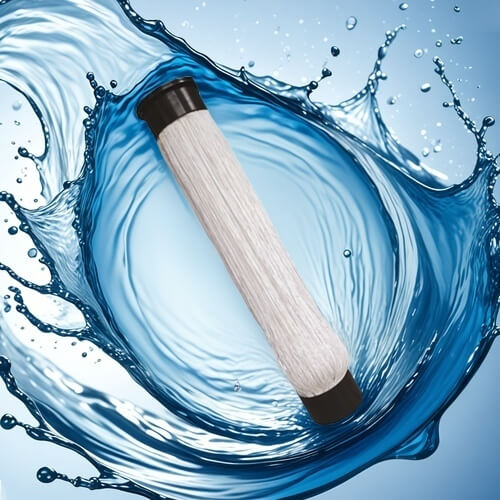What is anaerobic wastewater treatment
Anaerobic wastewater treatment is a wastewater treatment method that uses anaerobic microorganisms (mainly anaerobic bacteria) to decompose organic matter in wastewater under anaerobic or anoxic conditions. The following is a detailed introduction:
I. Basic principles
Hydrolysis stage
Complex macromolecular organic matter, such as proteins, polysaccharides, fats, etc., are first decomposed into small molecular soluble organic matter under the action of extracellular enzymes secreted by anaerobic microorganisms. For example, proteins will be hydrolyzed into amino acids, and polysaccharides will be decomposed into monosaccharides. This process is like disassembling a complex machine into small parts to provide suitable substrates for subsequent reactions.
Acidification stage
The hydrolyzed small molecular organic matter is converted into short-chain fatty acids (such as acetic acid, propionic acid, butyric acid, etc.), alcohols, carbon dioxide and hydrogen under the action of acid-producing bacteria. These short-chain fatty acids are important substrates for the subsequent methane production process. For example, glucose can be converted into acetic acid and hydrogen during the acidification process.
Methane production stage
This is the key stage of anaerobic treatment. Methanogens use short-chain fatty acids, hydrogen and carbon dioxide produced in the acidification stage to generate methane and carbon dioxide. Methane is an important energy gas, and its production process can be simply expressed by a chemical equation, such as acetic acid decomposition:. Methanogens are a very special type of microorganisms. They have strict requirements on environmental conditions, grow slowly, and are the rate-limiting step in the anaerobic treatment process.

II. Types of anaerobic reactors
Anaerobic digester
This is the most traditional anaerobic reactor. It is generally a large, sealed pool, and the wastewater stays in the pool for a long time (generally several days to dozens of days) to ensure the full decomposition of organic matter. Its advantages are simple structure, large processing capacity, and ability to treat high-concentration organic wastewater. However, its disadvantages are long hydraulic retention time, large footprint, and relatively low treatment efficiency. For example, when treating sludge from urban sewage treatment plants, anaerobic digesters can decompose organic matter in sludge, reduce the volume of sludge, and produce biogas at the same time.
Anaerobic contact reactor
This reactor adds a sludge return system on the basis of the anaerobic digester. By sludge return, the reactor can maintain a high microbial concentration and improve the treatment efficiency. Its working process is that after the wastewater enters the reactor, it is fully contacted with the anaerobic sludge, the organic matter is decomposed, the treated wastewater flows out of the reactor, and part of the sludge is returned to the front end of the reactor. Its hydraulic retention time is shorter than that of a simple anaerobic digester, and the treatment effect is better. It is suitable for treating medium and high concentration organic wastewater.
Upflow anaerobic sludge blanket (UASB) reactor
UASB reactor is a highly efficient anaerobic reactor that is currently widely used. Its main structure includes the water distribution system at the bottom, the reaction zone (sludge bed zone and suspended sludge zone) in the middle, and the three-phase separator at the top. The wastewater enters from the bottom and is evenly distributed in the reactor. During the upward flow, it is fully contacted with the anaerobic sludge in the sludge bed. The microorganisms in the sludge bed decompose the organic matter, and the biogas produced drives the sludge particles to move upward. In the three-phase separator at the top, the biogas is separated, the sludge returns to the reaction zone, and the treated water flows out of the reactor. The UASB reactor has high treatment efficiency and short hydraulic retention time, and can treat high-concentration organic wastewater, such as food processing wastewater, papermaking wastewater, etc.
III. Advantages of anaerobic wastewater treatment
Low energy consumption
Compared with aerobic treatment, anaerobic treatment does not require aeration equipment to fill a large amount of oxygen into the water, thereby saving a lot of electricity. Because in aerobic treatment, the electricity consumed by aeration accounts for a large part of the total energy consumption, while anaerobic treatment is carried out in an oxygen-free environment, which reduces this part of energy consumption.
Generated biogas can be used
The main component of the biogas produced during anaerobic treatment is methane, which is a high-quality clean energy. The biogas can be collected and used for power generation, heating, etc. For example, in some large sewage treatment plants, the biogas produced by anaerobic treatment can be used for equipment operation in the plant, reducing dependence on external energy.
Small amount of residual sludge
Anaerobic microorganisms decompose organic matter mainly by converting it into gases such as methane and carbon dioxide. Compared with aerobic treatment, the amount of residual sludge produced is less. This not only reduces the cost of sludge treatment, but also reduces the environmental risks that may be brought about during sludge disposal.
IV. Disadvantages and limitations of anaerobic wastewater treatment
Long treatment time
Especially for some complex organic matter, anaerobic treatment requires sufficient time to complete the reactions at each stage. For example, for industrial wastewater containing refractory organic matter, it may take days or even weeks to achieve a good treatment effect, while aerobic treatment may be completed in hours to days.
Sensitive to environmental conditions
Anaerobic microorganisms are very sensitive to environmental conditions such as temperature and pH. For example, the suitable temperature for methanogens is generally around 35-38℃, and the pH value is between 6.8-7.2. If the temperature or pH value exceeds the suitable range, the activity of the microorganism will be inhibited or even die, thus affecting the treatment effect.
General effluent quality
The effluent after anaerobic treatment usually contains a certain amount of organic matter and cannot be discharged directly. Generally, further aerobic treatment or other deep treatment is required to meet the discharge standards. Because anaerobic treatment mainly decomposes complex organic matter into simple organic matter and gas, its effect on removing some small molecular soluble organic matter is limited.
